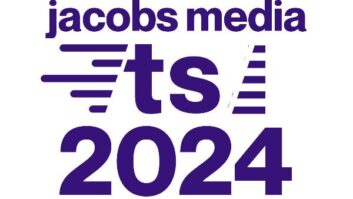Radio World continues our coverage of the flood of opinions being registered at the FCC about the future of the AM radio broadcast band and its occupants.
Among the many people weighing in about AM revitalization is Andy Skotdal. The president of S-R Broadcasting and CAAM Partnership (S-R/CAAM), licensees of AM stations in Washington, urges the Federal Communications Commission to take action on critical hours protections, cross-service FM translators, foreign ownership issues, AM receivers and even migration to the VHF band.
In his filed comments, Skotdal presses the commission to eliminate critical hours protections. “The public interest would be served by removing the critical hours restrictions, and spectrum utilization would become more efficient based on the population serviced by the expanded coverage.”
[Read an FCC information page about critical hours protections.]
He also asks the commission to consider granting primary status to cross-service FM translators upon surrender of their AM license. Referencing previous comments on this issue, Skotdal said that if no reports of interference are reported from the operation of the FM translator for a period of time of one to two years, a broadcaster should be afforded an opportunity to surrender their AM facility and have their translator assigned primary status. As Radio World has reported, Ben Downs, another influential AM broadcaster, has made a similar suggestion.
“Anything that can be done to hasten the elimination of Class D stations from the AM band for the mutual benefit of all should be encouraged in order to lessen interference on the AM band,” Skotdal wrote in his filing.
Skotdal thinks the commission needs to be more involved with AM receivers. It should mandate that all radios produced for use in the United States include AM receivers and that those be guided by a set of production standards.
“With the exception of cell-phones, where it is physically impossible to incorporate an AM receiver, AM radio is suffering a ‘death of a thousand cuts’ as receiver manufacturers eliminate AM as an option in their radios,” Skotdal wrote, referencing electric model cars, certain luxury automobiles, hotel room radios and other FM-only devices. ”If the FCC intends to maintain the integrity of its investment in AM radio as a platform, it must mandate that receiver manufacturers incorporate that platform in their offerings.”
Receivers should follow manufacturing standards that will enable them to achieve at least 10 kHz of bandwidth, he said, “rather than follow the iBiquity specification of 6 kHz,” he said. ”These kinds of changes are discouraging AM owners from maintaining a broadband antenna system, causing audio fidelity and performance to suffer greatly as a result.”
One means of further revitalizing the AM band is to eliminate foreign ownership regulations for the AM service class. “Ending the foreign ownership restriction may encourage new investment and new programming on the AM band making these signals useful to an entirely new and diverse group of Americans who are currently underserved whether they are Korean or Indian, two large populations in the Seattle area, or whether they are Latin American, as they are in Florida, for example. A greater variety of programming may be found if a larger pool of owners is allowed to enter and compete. FM pirates may choose to become licensed in the AM band knowing their status as a U.S. citizen no longer impacts their ability to broadcast.”
Skotdal also pressed the commission to consider a future rulemaking on VHF migration, a topic he has written about in Radio World.
Comments underscore “the perspective of a majority of AM owners that there is more perceived value in the continuous coverage, building penetration, lesser operational costs and FM-chip cell phone receiver accessibility which is only possible in the VHF band,” he wrote in his filing. “AM’s reduced coverage/directional patterns, lack of future on cell phone receiver chips, and building penetration challenges posed by foil wrapped insulation, treated glass, fluorescent lights, computers, and other forms of interference will continue to erode listening on the AM band.”
Unless action is taken, the once-broad reach of AM signals will continue to suffer, he said. “FM migration to low-VHF TV channels is the only sure way to preserve the specialty programming currently found on AM in America and creates a true benefit for the consumer and manufacturer alike: One band, FM, across the United States.”












